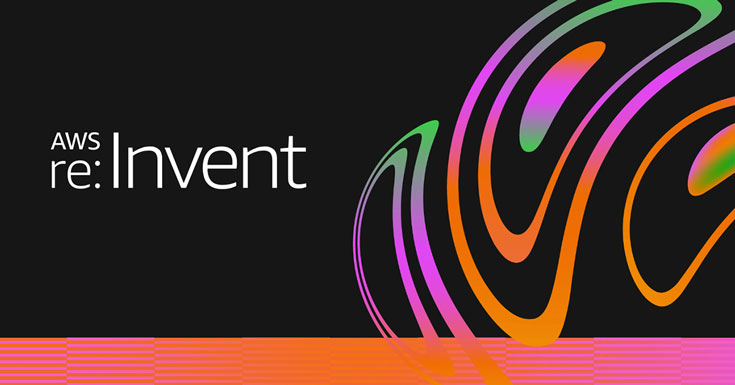AWS re:Invent Showcases the Pace of Cloud Innovation
Principal Analyst

AWS re:Invent 2020 was quite the show. As an all-virtual experience, AWS showed that it understands how to bring its speakers, especially its most senior leaders, to a virtual forum packed with the detail of what makes AWS special. As the industry leader in cloud platforms, it’s clear that AWS intends to keep that position, even while opening direct support for multi-cloud architecture.
AWS has done very well during the pandemic. Very well. A 46% year-over-year growth rate for a mature company is stunning. We can see that many of the technologies we counted on so much last year grew the AWS business significantly. Most of this growth is not a bubble. It represents an acceleration of a shift to the cloud that was already underway.
AWS leaders gave keynotes on various topics, and there were over 200 detailed sessions on AWS services and customer experiences. All these sessions are available online.
Instead of live-blogging and publishing as the event wrapped up, I wanted to walk away from the excitement, gather my thoughts, and come back and reflect on what was communicated and how it was presented.
A Marathon of Announcements
Andy Jassy, CEO of AWS, ran a marathon of innovative product announcements for three hours, announcing more than 30 products. It is difficult to fathom any other company being able to do this, and kudos to Mr. Jassy for explaining all these innovations in fairly plain English. I will summarize some of the most critical announcements below.
As higher education moves toward SaaS applications, we might think that these technical details are becoming less important. However, if your institution is still developing custom code or managing infrastructure, you should be paying attention to the evolution of these platforms. As we dig into the set of platforms leading the IaaS and PaaS space over the coming months, we’ll look at how to best position your institution to migrate to the cloud.
Below is a rundown of some highlights. If you are not super-technical, some of the details might not resonate, but understand that these platforms are not just giant computers you can rent. They are highly capable development and operational platforms that far exceed basic storage and compute services.
IaaS/PaaS services
- Custom silicon: AWS has been building and refining its own chips, achieving price and performance optimization and overall significant increases in performance. They are building machine-learning-specific chips that underpin their service offerings in this space and provide serious horsepower for data scientists.
- Mac on AWS: A new EC2 (server) instance on MacOS allows for scaled usage of Mac minis with the AWS-specific virtualization hardware, meaning all of the horsepower you rent from AWS on MacOS is running your workload, not the virtualization.
- Hybrid-cloud AWS on premises: Containerization has changed computing in almost every data center on the planet (including your own, if you still have one). AWS is now providing their own containerization software (ECS Anywhere and EKS Anywhere), allowing Amazon workloads to run on premises, meaning that engineering software for a single platform (AWS) can include localized execution to reduce latency and provide local redundancy. AWS has also developed devices to bring AWS execution as near to a site as desired for reduced latency when critical.
- Serverless gets cheaper (for some): AWS Lambda serverless processing is now billed at increments of 1ms instead of 100ms. Consider this method of building their business by making their services more affordable and flexible.
- Database services target Oracle and Microsoft: Not only has AWS created a database type for every purpose under the sun, but for migrating workloads from Oracle and MS SQL databases, they can convert and mimic them without requiring database licensing.
Machine Learning
- ML in a box for Data Scientists: AWS has brought significant resources to the race with Google for the lead in machine learning (ML) resources. From building a complete development environment for data scientists, to custom chips for speed and power, to native support for all the most popular frameworks that data scientists need, AWS is very focused on ML.
- Using ML to improve code: AWS’s internal code quality and security tools have been refined and opened to the development community, giving the ability to inspect code for errors, operational issues, and security flaws by invoking a service. One example is the ability to find the most expensive line of code in your system, assisting customers in optimizing the systems and saving significant dollars.
- Using ML to ask and answer business questions: Layering on top of business intelligence functionality, AWS is rolling out the ability to make queries in natural language and to get auto-generated narratives from the data.
Other Services
- Contact Center as a Service: Amazon Connect brings a full set of contact center functionality to an organization, with new data analysis functionality to help agents and supervisors resolve problems faster and more accurately. As a major pain point in higher education, these services could provide institutions an alternative method to provide support.
AWS Architecture and Operations
If you really want to geek out, spend a little time with Verner Vogels, CTO of AWS. His keynote—fascinating to this old programmer—will give you a deep insight into the operations and architecture of AWS. Vogels discusses key technical concepts such as dependability, evolvability, and diversity. Do AWS customers need to know these details? Not really, but this depth should help technologists trust and understand what AWS has built. Trust is a critical issue in earning the business of any customer seeking these services.
Why is the AWS Trajectory Important?
As the leading provider of cloud services, AWS drives market direction, hosts most of the largest companies in the world, and provides the broadest platform of cloud services available. If you are a research institution, your researchers are likely already AWS customers. You may also have departmental IT teams who are customers of AWS. Understanding what this platform, as well as its competitors, can offer will help you guide the strategic direction of technology on your campus, regardless of your role.
If your institution is limited in its cloud usage, this is a great time to task a small team with small-scale experimentation and pilot activities across multiple cloud service providers (CSPs). The Tambellini Group will explore much more about the selection, adoption, and management of CSPs over the first half of 2021.
Categories
Share Article:

Other Posts From this Author:
© Copyright 2025, The Tambellini Group. All Rights Reserved.